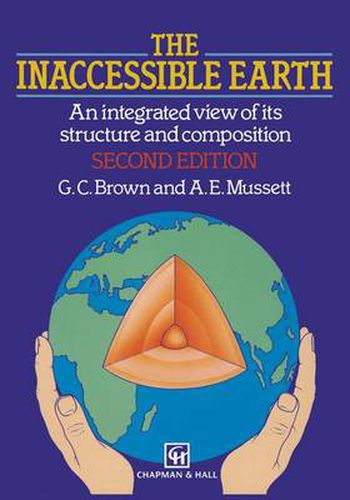Readings Newsletter
Become a Readings Member to make your shopping experience even easier.
Sign in or sign up for free!
You’re not far away from qualifying for FREE standard shipping within Australia
You’ve qualified for FREE standard shipping within Australia
The cart is loading…






This title is printed to order. This book may have been self-published. If so, we cannot guarantee the quality of the content. In the main most books will have gone through the editing process however some may not. We therefore suggest that you be aware of this before ordering this book. If in doubt check either the author or publisher’s details as we are unable to accept any returns unless they are faulty. Please contact us if you have any questions.
In the dozen years since the first edition appeared, there has been a great advance in understanding of the Earth’s deep interior. This is not because there have been breakthroughs in understanding, or even many changes of ideas, but largely because of many small advances, often the result of improved tech niques. This has led to a complete revision of the book. For instance, we have a much better idea of how the cloud of gas that formed the Solar Nebula evolved into the Sun and the planets, and of the chemical processes that accompanied its evolution and determined the mix of elements in the Earth. We have a better understanding of convection and how plates are an essential part of it, and how it is accompanied by chemical processes that have extracted the materials to build continents. Although the major variation within the Earth is radial, improved geophysical and geochemical techniques have made progress in investigating and under standing the lateral heterogeneities, and it is encouraging that when geochemists and geophysicists talk about lateral heterogeneities they can sometimes be referring to the same thing. Plumes have become very fashionable as the cause of hot-spot magmatism and associated geochemical anomalies, probably origi nating at the base of the mantle (though clear evidence for their existence is lacking).
$9.00 standard shipping within Australia
FREE standard shipping within Australia for orders over $100.00
Express & International shipping calculated at checkout
This title is printed to order. This book may have been self-published. If so, we cannot guarantee the quality of the content. In the main most books will have gone through the editing process however some may not. We therefore suggest that you be aware of this before ordering this book. If in doubt check either the author or publisher’s details as we are unable to accept any returns unless they are faulty. Please contact us if you have any questions.
In the dozen years since the first edition appeared, there has been a great advance in understanding of the Earth’s deep interior. This is not because there have been breakthroughs in understanding, or even many changes of ideas, but largely because of many small advances, often the result of improved tech niques. This has led to a complete revision of the book. For instance, we have a much better idea of how the cloud of gas that formed the Solar Nebula evolved into the Sun and the planets, and of the chemical processes that accompanied its evolution and determined the mix of elements in the Earth. We have a better understanding of convection and how plates are an essential part of it, and how it is accompanied by chemical processes that have extracted the materials to build continents. Although the major variation within the Earth is radial, improved geophysical and geochemical techniques have made progress in investigating and under standing the lateral heterogeneities, and it is encouraging that when geochemists and geophysicists talk about lateral heterogeneities they can sometimes be referring to the same thing. Plumes have become very fashionable as the cause of hot-spot magmatism and associated geochemical anomalies, probably origi nating at the base of the mantle (though clear evidence for their existence is lacking).